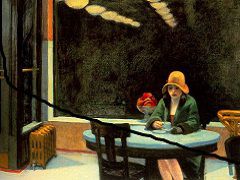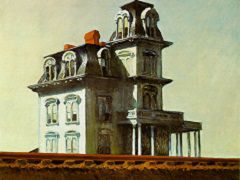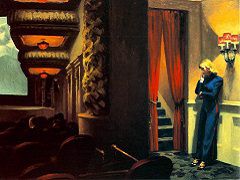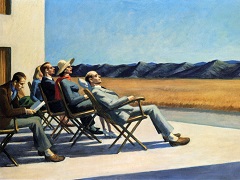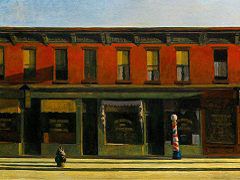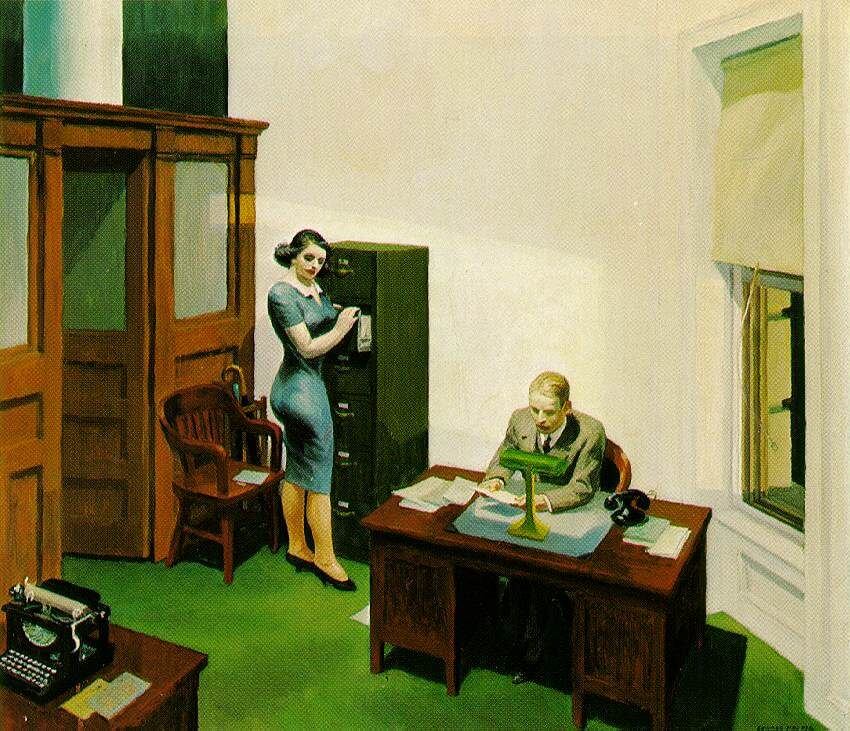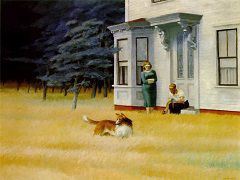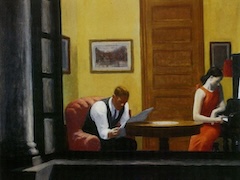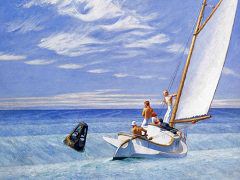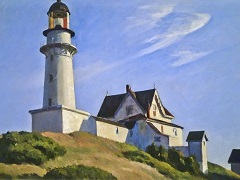Night Windows, 1928 by Edward Hopper
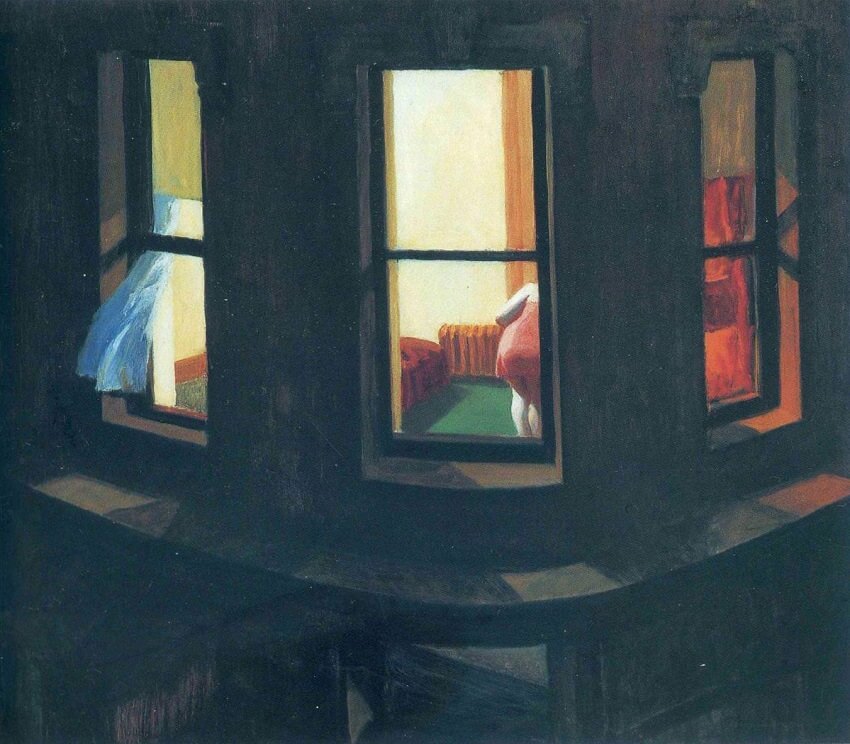
At the New York School of Art, where Hopper was enrolled from 1900 to 1905, his teacher Robert Henri told his students: "Low art is just telling things; as, There is the night. High art gives the feel of the night. The latter is nearer reality although the former is a copy." Night Windows is one among many of Hopper's paintings that show how thoroughly he had absorbed this precept.
Returning to the United States in 1907 from his first trip to Paris, Hopper found it "a chaos of ugliness"; nevertheless, it was the contemporary American city that he was to make his particular theme. He did not perceive New York astir with human activity, like Henri, admire the dynamism of its traffic and skyscrapers, like Marin, or distill its structures into abstract patterns, like the Precisionists. Instead, he was interested in the forms and materials of the city's streets and buildings - stone, brick, asphalt, steel, and glass - and the effect of light falling upon them. Light was the most powerful and personal of Hopper's expressive means. He used it as an active element in his paintings to model forms, define the time of day, establish a mood, and create pictorial drama by contrasting it with areas of shadow and darkness.


